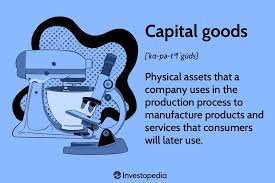In today’s competitive business environment, maximizing productivity is essential for success. One key factor that can significantly impact productivity is the use of capital equipment. Capital equipment refers to long-lasting goods that a company uses in the production of goods or services. This article will explore the impact of capital equipment on productivity and strategies for maximizing its effectiveness.
1. Introduction
Capital equipment plays a crucial role in the productivity of a business. It includes machinery, vehicles, computers, and other tools that are essential for operations. The proper utilization of capital equipment can lead to increased efficiency, reduced costs, and improved quality.
2. Importance of Capital Equipment
Capital equipment is a significant investment for any business, but it can also provide substantial returns if used effectively. It can help businesses produce goods and services more efficiently, leading to increased output and profitability. Additionally, capital equipment can improve the quality of products and services, making them more competitive in the market.
3. Impact on Productivity
Capital equipment can have a direct impact on productivity in several ways:
Increased Efficiency: Capital equipment can automate processes, reducing the need for manual labor and increasing efficiency.
Improved Quality: Advanced machinery and tools can improve the quality of products, reducing defects and rework.
Cost Savings: Capital equipment can reduce operating costs through improved efficiency and reduced waste.
Increased Capacity: With the right equipment, businesses can increase their production capacity, allowing them to meet growing demand.
4. Strategies for Maximizing Productivity
To maximize the impact of capital equipment on productivity, businesses can implement the following strategies:
Regular Maintenance: Regular maintenance can help ensure that equipment operates at peak efficiency and reduces the risk of breakdowns.
Employee Training: Proper training can help employees use equipment effectively, maximizing its capabilities.
Upgrades and Replacements: Regularly upgrading or replacing outdated equipment can improve efficiency and productivity.
Data Analysis: Analyzing data from equipment can help identify inefficiencies and areas for improvement.
Integration with Other Systems: Integrating capital equipment with other systems can improve overall efficiency and productivity.
5. Conclusion
Capital equipment plays a crucial role in the productivity of a business. By investing in the right equipment and implementing effective strategies, businesses can maximize the impact of capital equipment on productivity, leading to increased efficiency, reduced costs, and improved competitiveness in the market.
